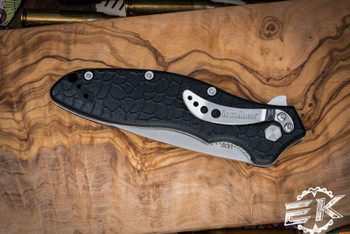Best Hunting Knives for Any Budget
Posted by Clayton on Jun 21st 2016
What Makes a Good Hunting Knife?
The right knife is a crucial component of any hunter’s toolbox. Fortunately, a good hunting knife can be found for any budget. Price is only one factor, so, first, we’ll see what makes a great hunting knife, and then look what that means for different budgets.The first thing to consider is what kind of hunting the knife will be used for – for example, small game hunting will have its own set of requirements. Next, think about the tasks the knife will be used for: How much dressing and processing will take place in the field and how much will take place later? Also, how versatile does the knife need to be? Will it be used for other tasks and different kinds of hunting?
Knife Design
These factors should be kept in mind when deciding on the knife design. There are a few things to consider:
Blade type: The three most popular blade types for hunting are drop-point, clip-point, and skinning.
- The drop-point allows for more control when cutting, since you’re less likely to rupture anything unintentionally, and its sturdy point and thicker width mean it’s less likely to break. The cutting pressure goes through the center of the knife, making it easier to use. It also has less of a point, making it safer all round. This combination of durability, control, efficiency, and safety make it the best (and most versatile) blade type for hunting.
- The clip-point is a more traditional choice, its sharper point makes it better for more detailed work (as well as being better for smaller game), and its longer edge makes it better for long-stroke slicing.
- The skinning knife does just as its name implies: Its specialized blade makes it the best tool for removing the hide quickly and efficiently.
Folding vs. fixed blade: In general, fixed blades are better for hunting. They are sturdier and easier to keep clean, and they are safer since there is no chance of the knife closing at the wrong time. However, sometimes a folding knife can be a better fit for some uses and budgets.
Tang: Dressing a kill can be arduous, so a higher tang blade is better. A blade that extends all the way through the handle will be more reliable and safer.
Blade length: This really depends on the type of game you’re hunting, but, generally, should be between 2.5 and six inches. A 4.5-inch blade is ideal – long enough to be versatile but short enough to be manageable
Handle: Processing game can get messy, so a synthetic handle is usually the best option.
The Right Tool for the Task
With the purpose of the knife and the different options in mind, you should be able to pick a knife that suits your budget. For example, if you are more of a casual hunter and want to use your knife for other activities, a quality medium-length folder is ideal. For the big game hunter, a longer fixed-blade, full-tang, drop-point would be an economical option. A hunter of both small and big game with more budget to spend could go for a combination of a medium fixed blade drop- or clip-point, as well as a skinning knife.
The point is that your budget, level of experience, and needs define what you should choose – but there is a good hunting knife for any budget.
Up to $100:
Advances in knife-making mean that high-quality knives can be bought now for very reasonable prices. You can get something versatile that could possibly be used for other purposes as well. A high-quality, drop-point folder with a medium length blade (roughly 3.5-inches) and synthetic handle will be:
- Lightweight and easy to carry
- Easy to use and have a point resistant to breaking
- Suitable for nearly all kinds of game
- Suitable for other survival and tactical uses
Kershaw makes great knives in this price range, and you can get one for as little as $30. If your budget is around $80, an on-sale Kershaw offering like the Launch 2 can give an added level of quality with much the same specifications.
$100-$200:
With this budget, you can start to get a more specialized, possibly choosing your knife with a type of game processing in mind. For example, a hunter of bigger game would do well with a drop-point, full-tang fixed blade – which would be very hard to break, and allow fast field dressing. A good length would be 3.5-inches and over. ESEE are known for their durable knives that retain sharpness. The ESEE 3 or the longer ESEE 5 would be a good choice.
$200-$300:
This price range might be where you get the most value; hunting knives for this price don’t get much better! With premium features and components, hunting knives for this price are also well made enough to be versatile (so they can also be used for survival tasks, for example). The Spyderco Bushcraft 4 g10 or the Zero Tolerance 180 both function as big game knives as well as all-around survival tools.
Over $300:
If your budget allows for it, there are no boundaries on the quality and craftsmanship you can get in a hunting knife. A knife for these prices will last a long time and will also look great. Consider it an investment, a top-of-the-line tool, and an heirloom.
Something like the Microtech Troodon will serve as a hunting, survival, and tactical knife. If you’re willing to spend more, something like an Aaron Frederick custom knife is not only a great hunting knife, it’s a work of craftsmanship.

